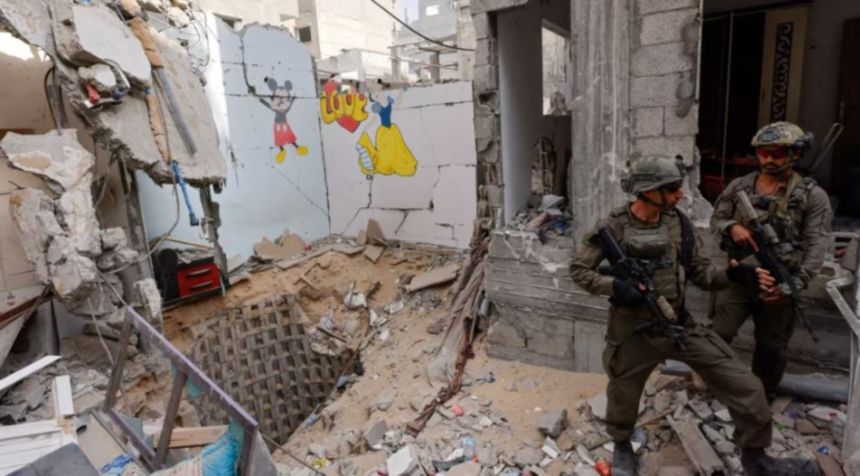Hamas and Israel have reached a ceasefire agreement divided into three phases. President Joe Biden and his successor, Donald Trump, both praised the agreement. Trump committed to using it to continue improving relations between Israel and Arab countries. These countries insist that the final solution should be the creation of an independent Palestinian state. However, some analysts suggest that Israel is preparing for a long-term stance in part of Gaza.
The first phase of the ceasefire agreement between Israel and Hamas begins with a partial withdrawal of Israeli forces. This would allow Palestinians who fled to the southern part of Gaza to return to their homes in the north.
In the second phase, the military will withdraw once all hostages are freed, which requires new negotiations. The goal of the second phase is to end the conflict.
This may take several months.
Analysts suggest that attacks may still be possible in the meantime.
“You will see regular Israeli strikes in Gaza, similar to those in the West Bank, which do not require the presence of a large number of forces in the Gaza Strip. Only the freedom of movement is needed for attacks,” says military analyst Yonah Bob from the ‘Jerusalem Post’ newspaper.
The third and final phase covers the period after the conflict ends: the reconstruction of Gaza with a new governing structure.
American President Joe Biden and President-elect Donald Trump both welcomed the agreement.
Analysts believe that Trump’s threats last week that “hell awaits” Hamas if an agreement was not reached before his inauguration may have played a role.
“The people of Gaza are already in hell, but there is also a sense that Trump may have put pressure on Prime Minister Netanyahu. That’s why we’re moving forward,” says Mirette Mabrouk from the Middle East Institute.
Trump, in a post on the social media platform ‘Truth,’ stated that he would use the agreement to expand the Abraham Accords, mediated by Washington, to normalize Arab-Israeli relations. Arab countries continue to insist on the creation of a Palestinian state or the resolution of the conflict through the so-called two-state solution.
“I do not see this as possible under the Trump administration, and this is not a direct criticism of him or anyone else. Israelis and Palestinians are far from reaching the difficult agreements necessary for resolving the conflict with the creation of two states,” says Jonathan Ruhe from the Hebrew Institute for National Security of America.
Other analysts suggest that Israel is preparing for a long-term presence in part of Gaza.
The ‘Netzarim’ corridor divides Gaza into the northern and southern parts. It has turned into a wide, paved road, lined with dozens of military barracks, signaling that Israel plans to maintain a long-term military presence in Gaza, reports VOA.
The Israel Defense Forces (IDF) state that this is not their plan.
“The decision on how long we stay is up to the government. We have said many times, if necessary, we can clear that area within 24 hours,” said IDF spokesperson Nadav Shoshani.
Hamas officials said that their organization won the war. The acting head of Hamas, Khalil al Hayya, stated that Israel did not achieve its objectives in Gaza.
Some Israeli analysts warn that Hamas remains influential in Gaza and could strengthen if Israel fully withdraws after the release of all hostages.
“Hamas has not been completely defeated militarily and still controls the Gaza Strip. These were the two main Israeli objectives outlined by the government and they have not yet been achieved. That is why this agreement is not strategically sound, but it is morally and nationally good for freeing the hostages,” says Jonathan Conricus, former spokesperson for the Israeli army.
The military says it seeks the creation of a neutral zone at least one kilometer wide along the border to ensure that a Hamas attack on Israel can never happen again.







